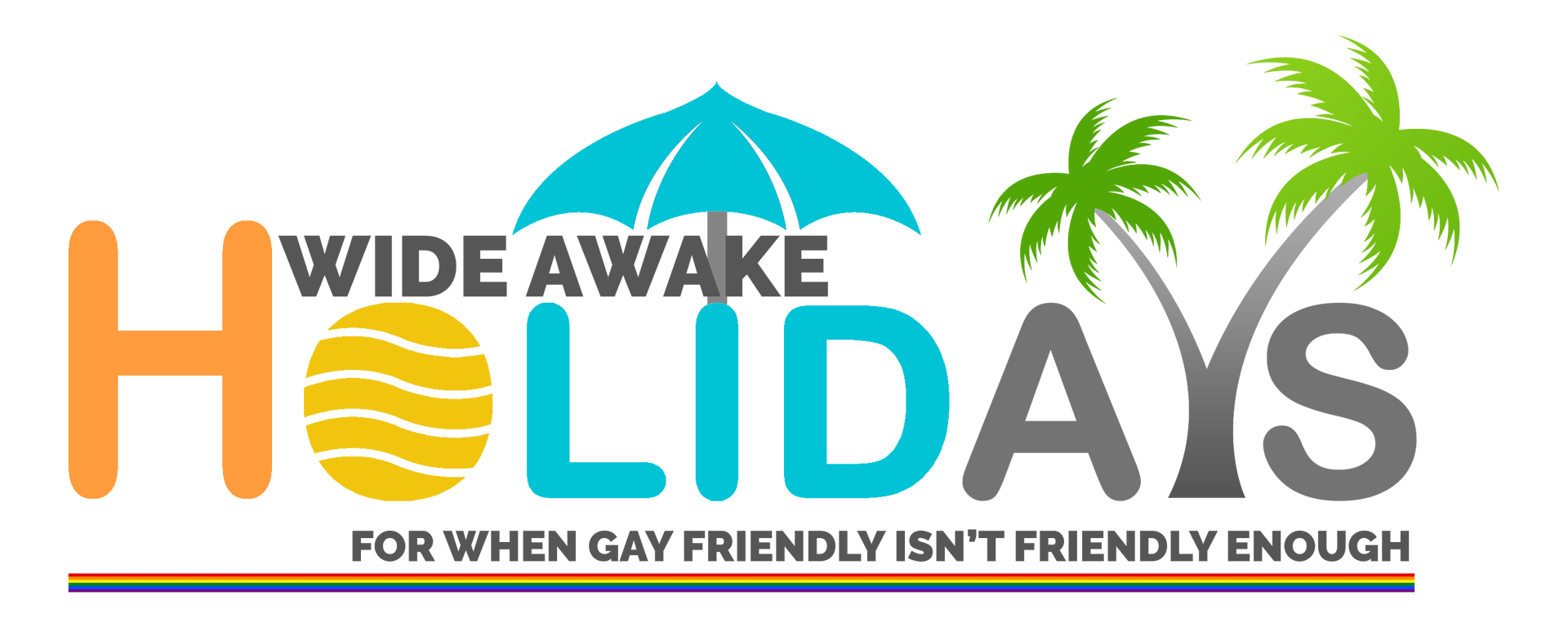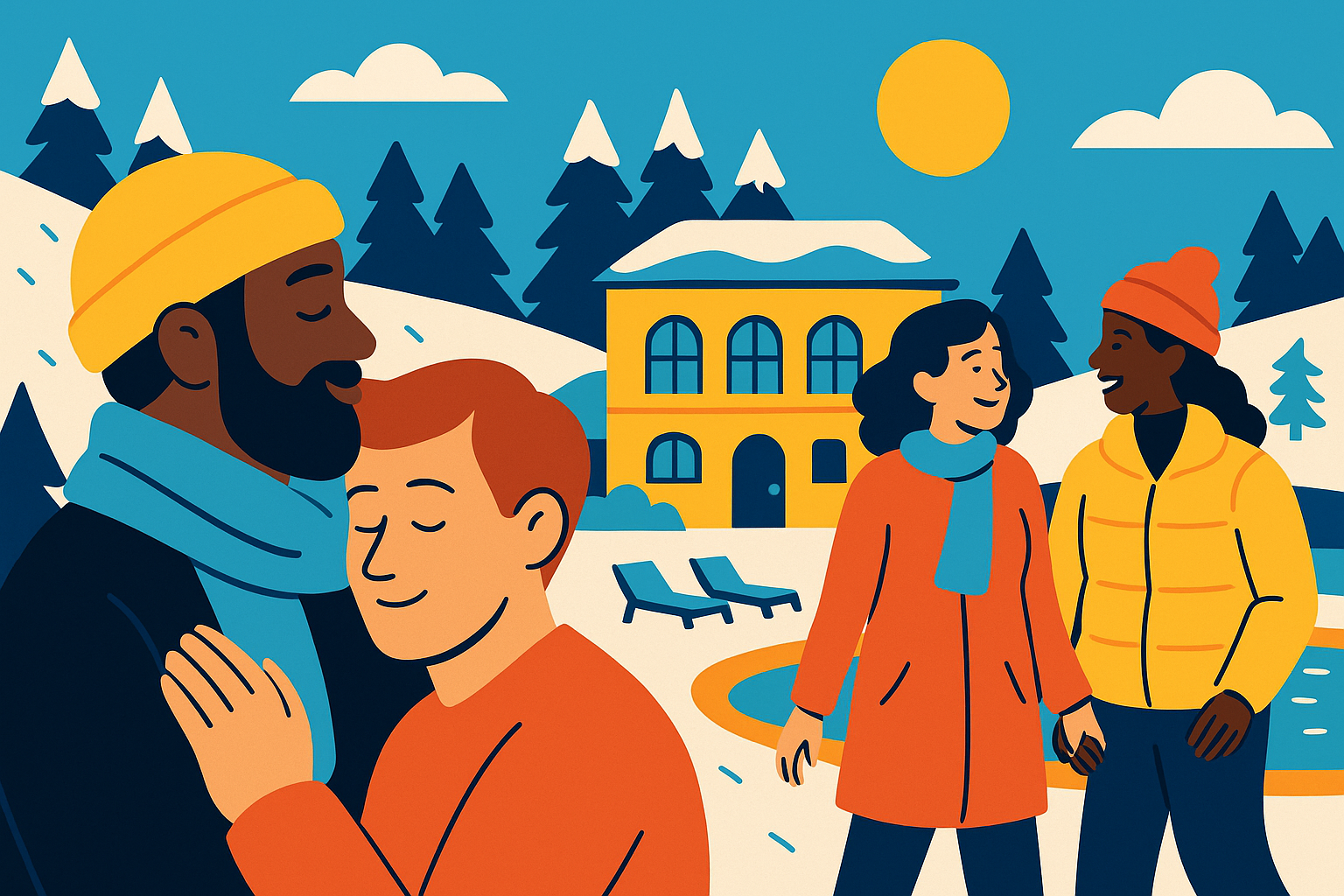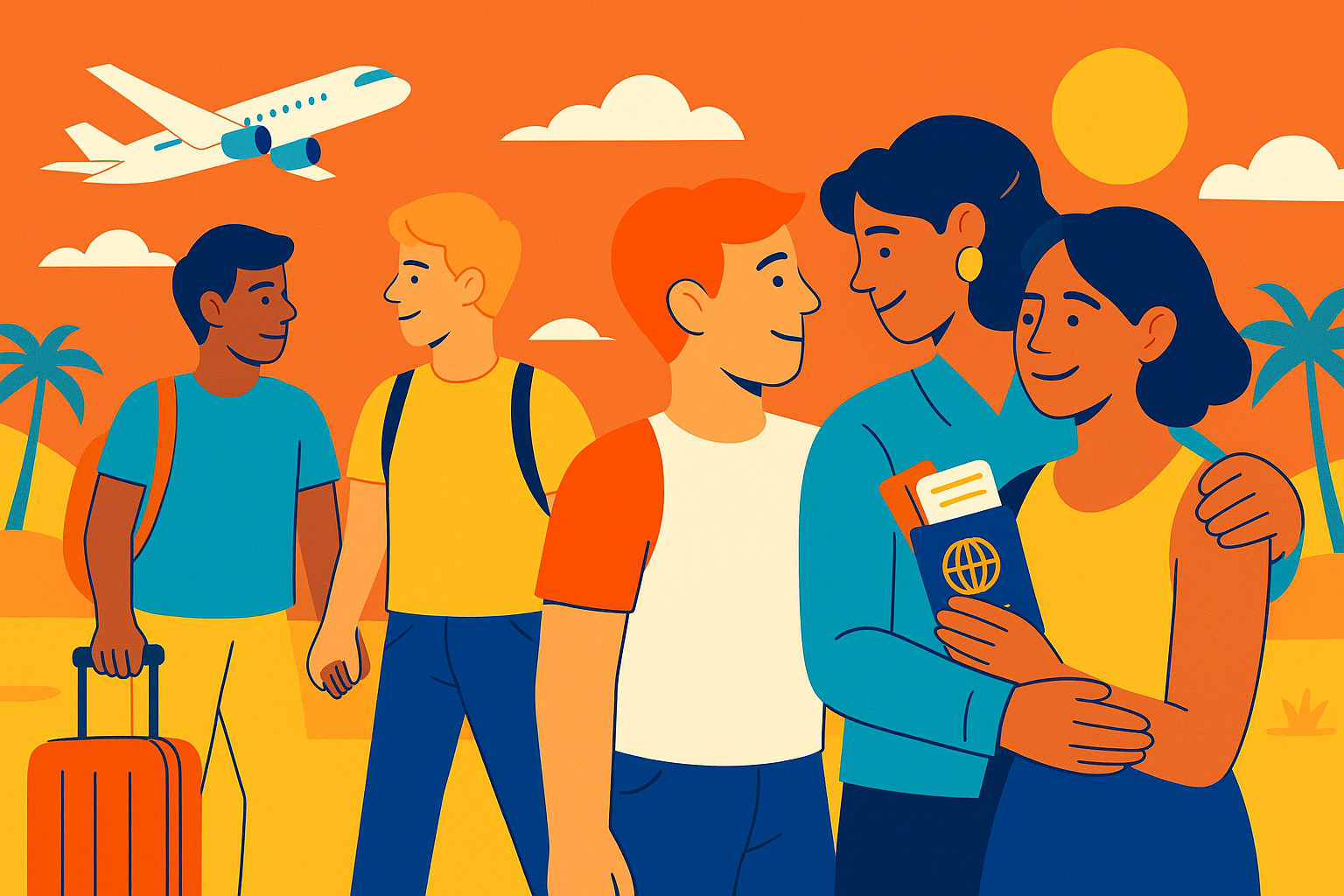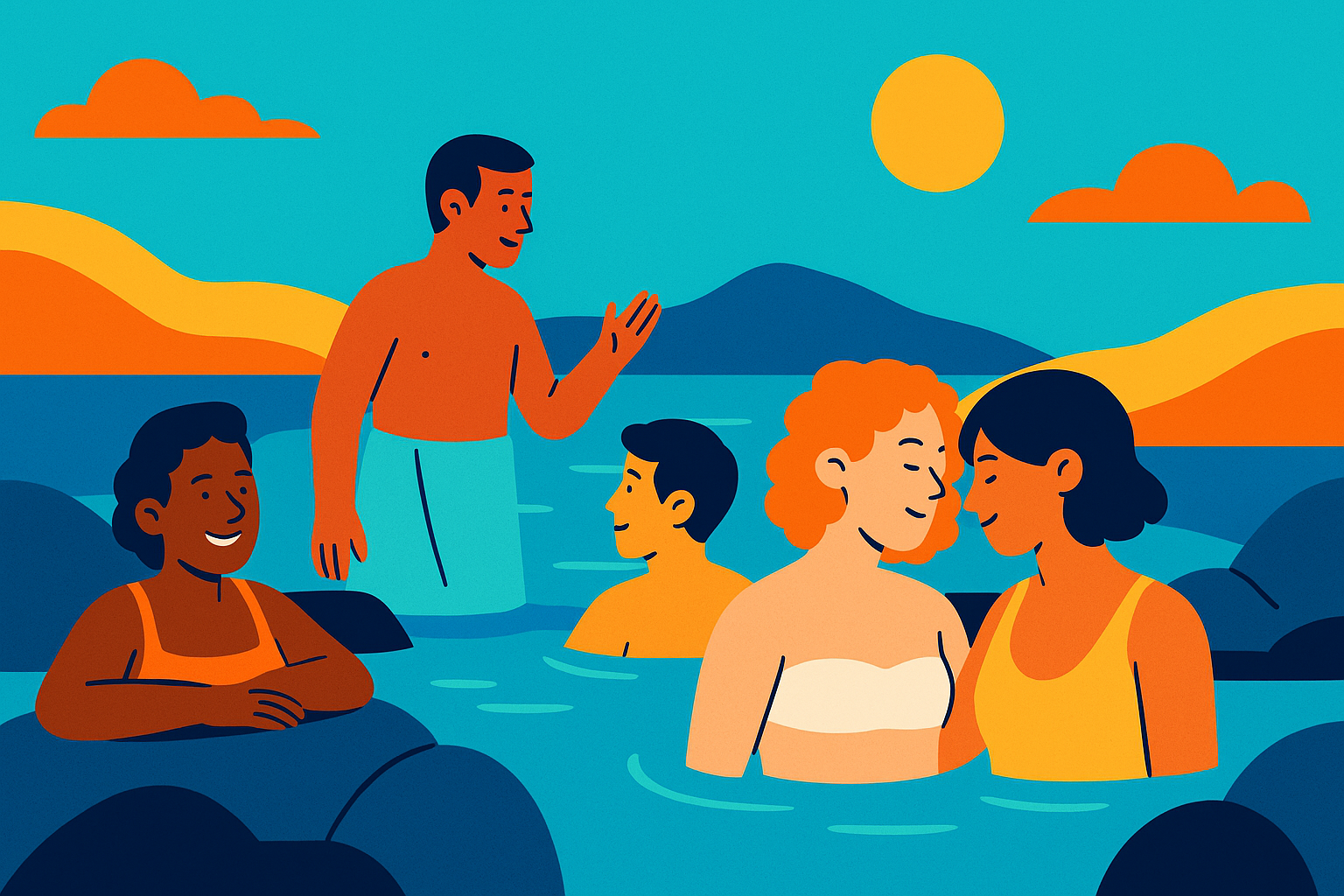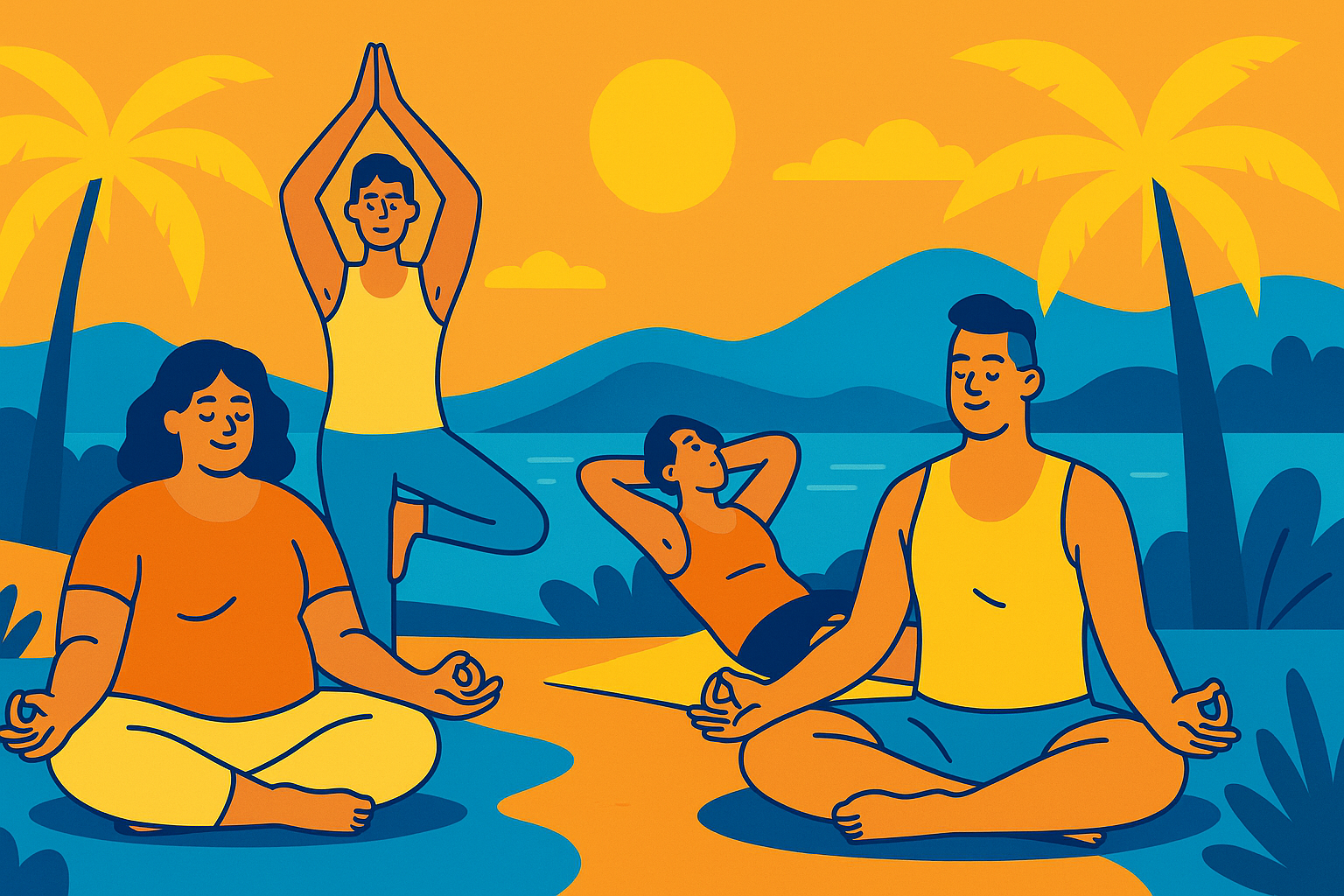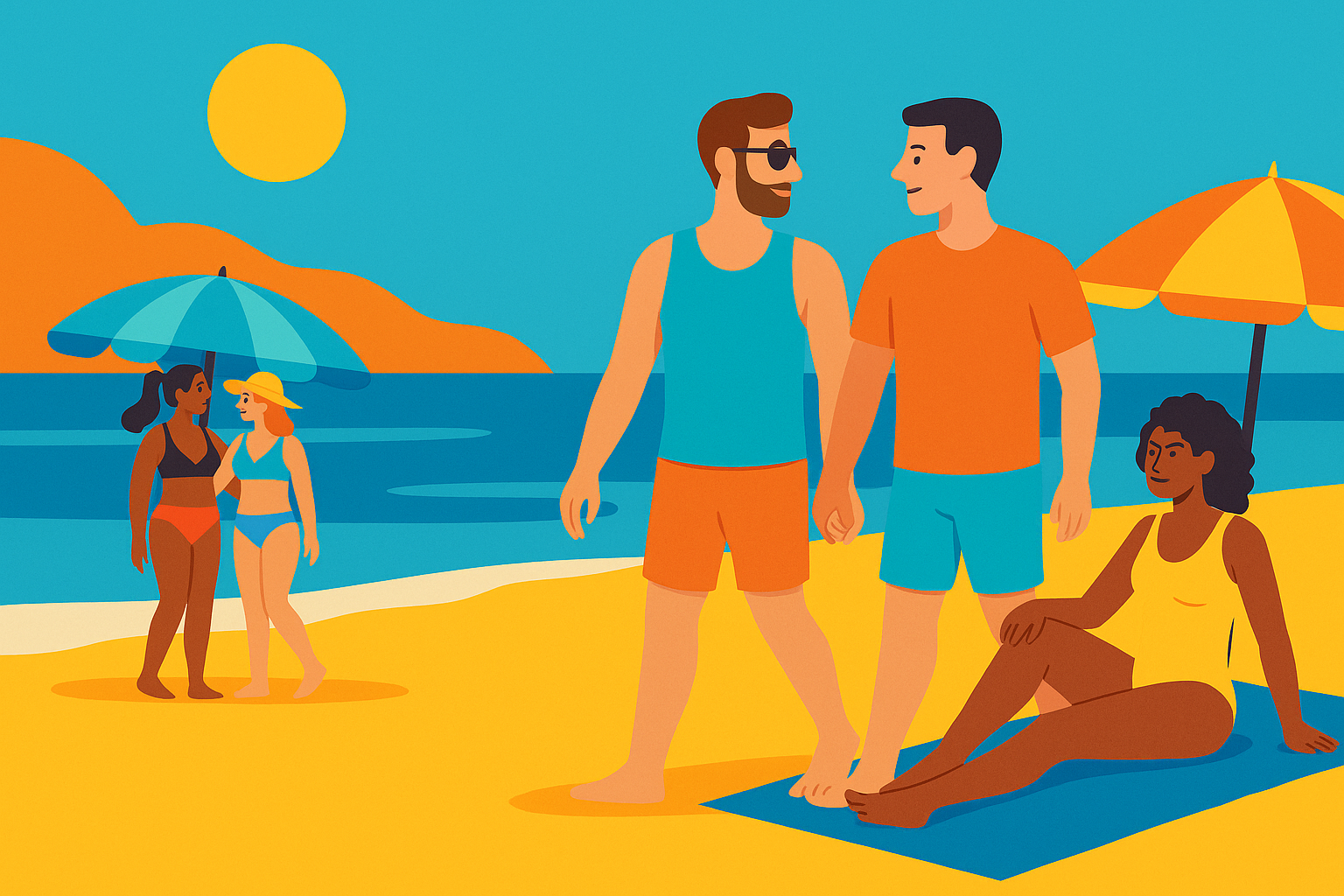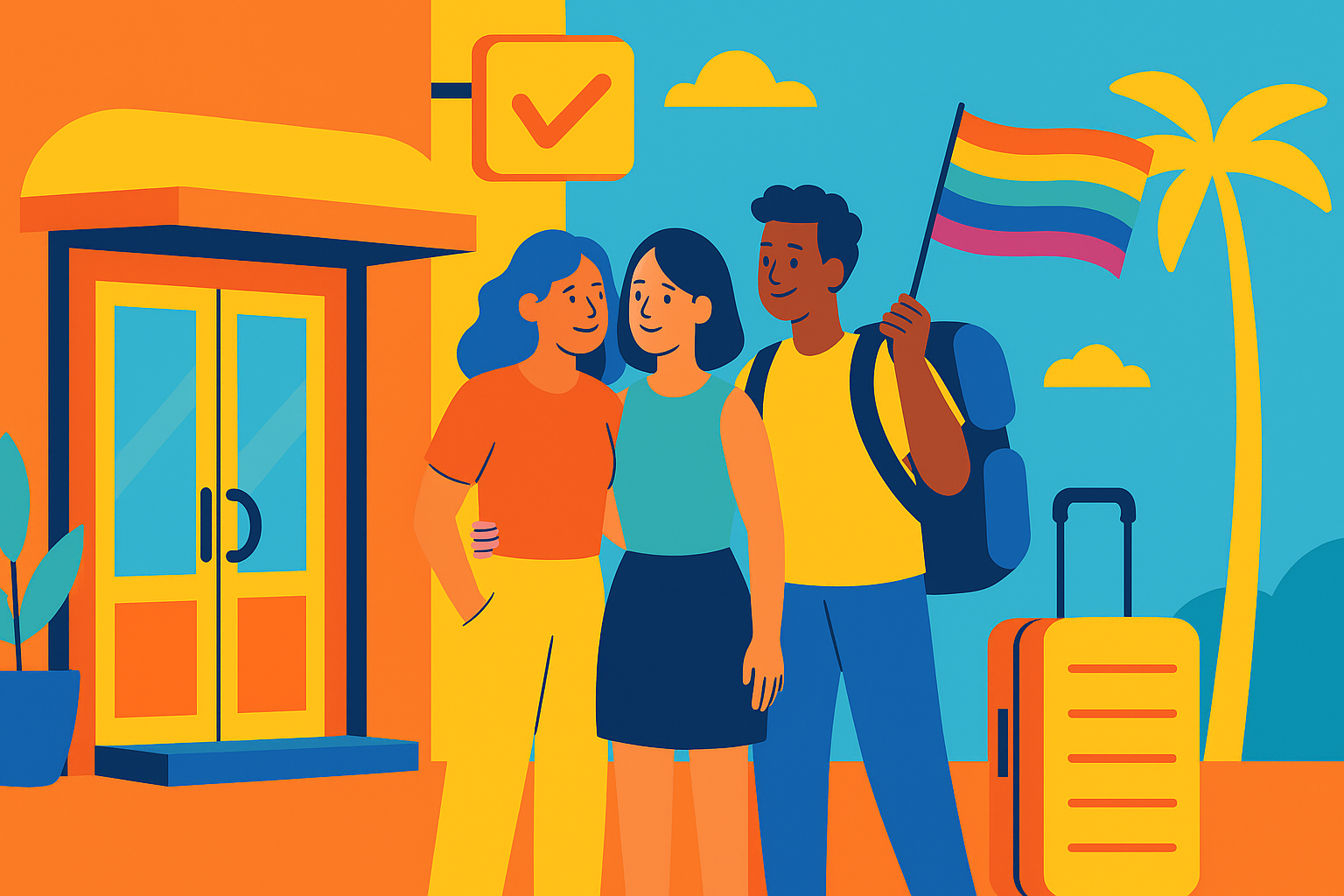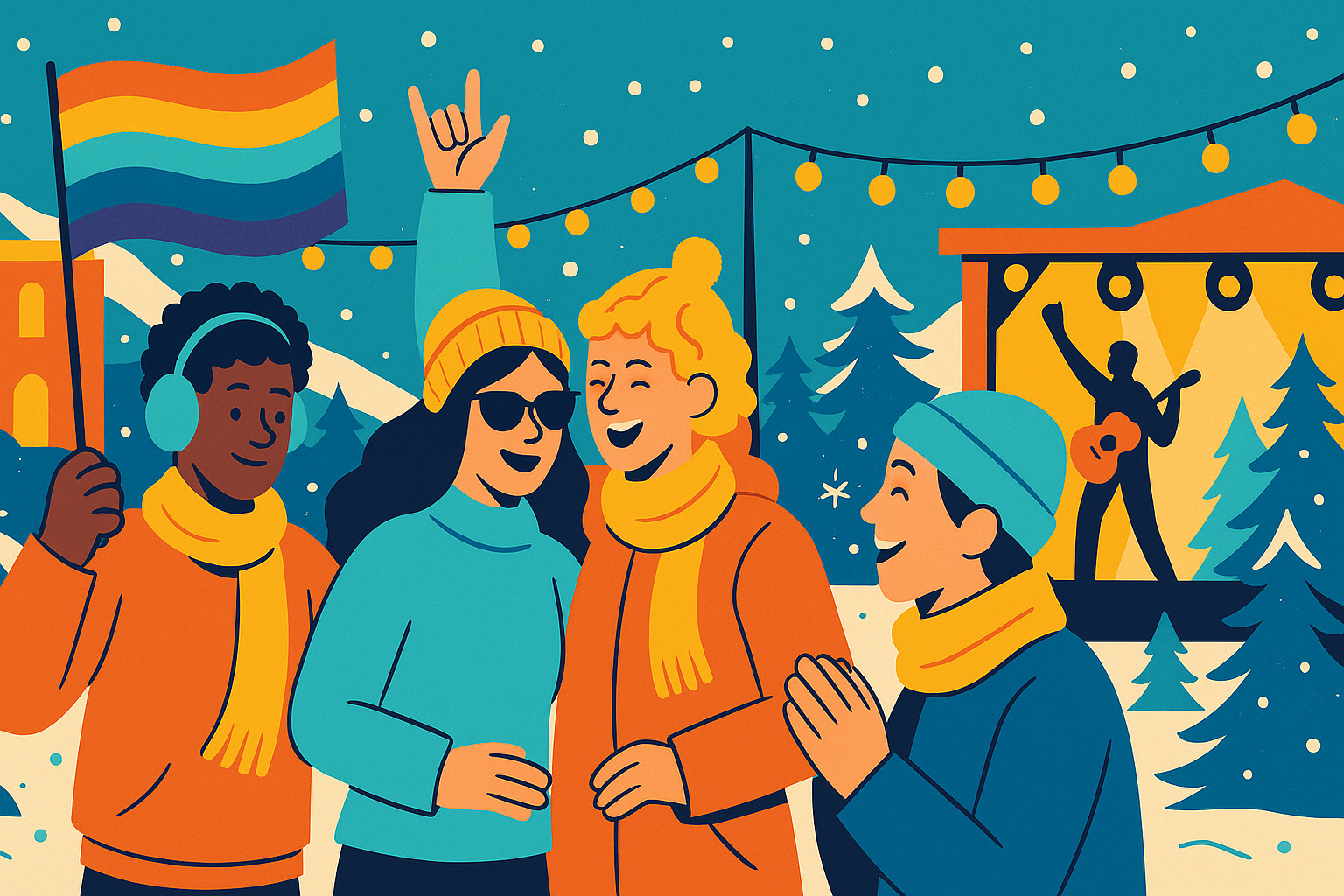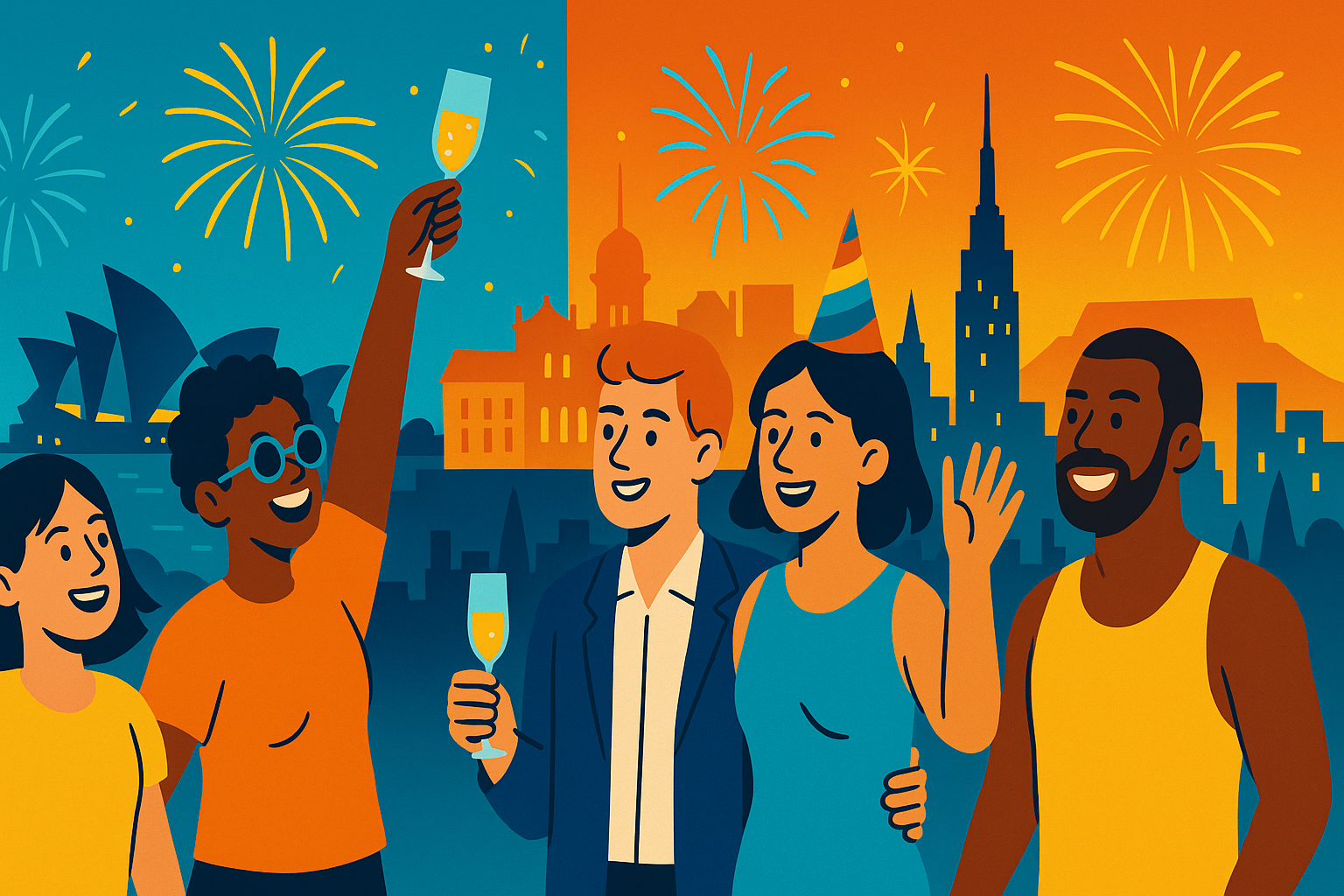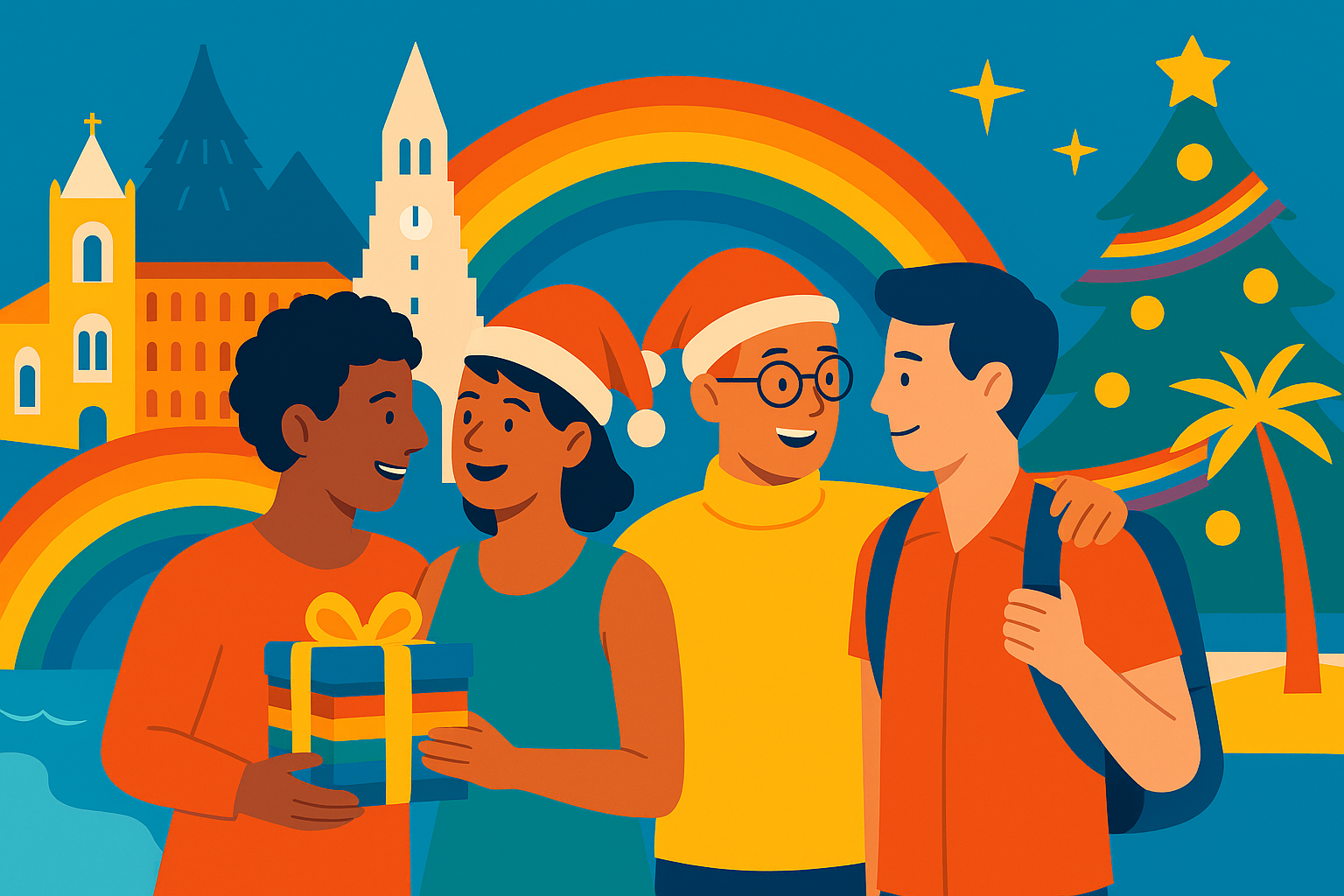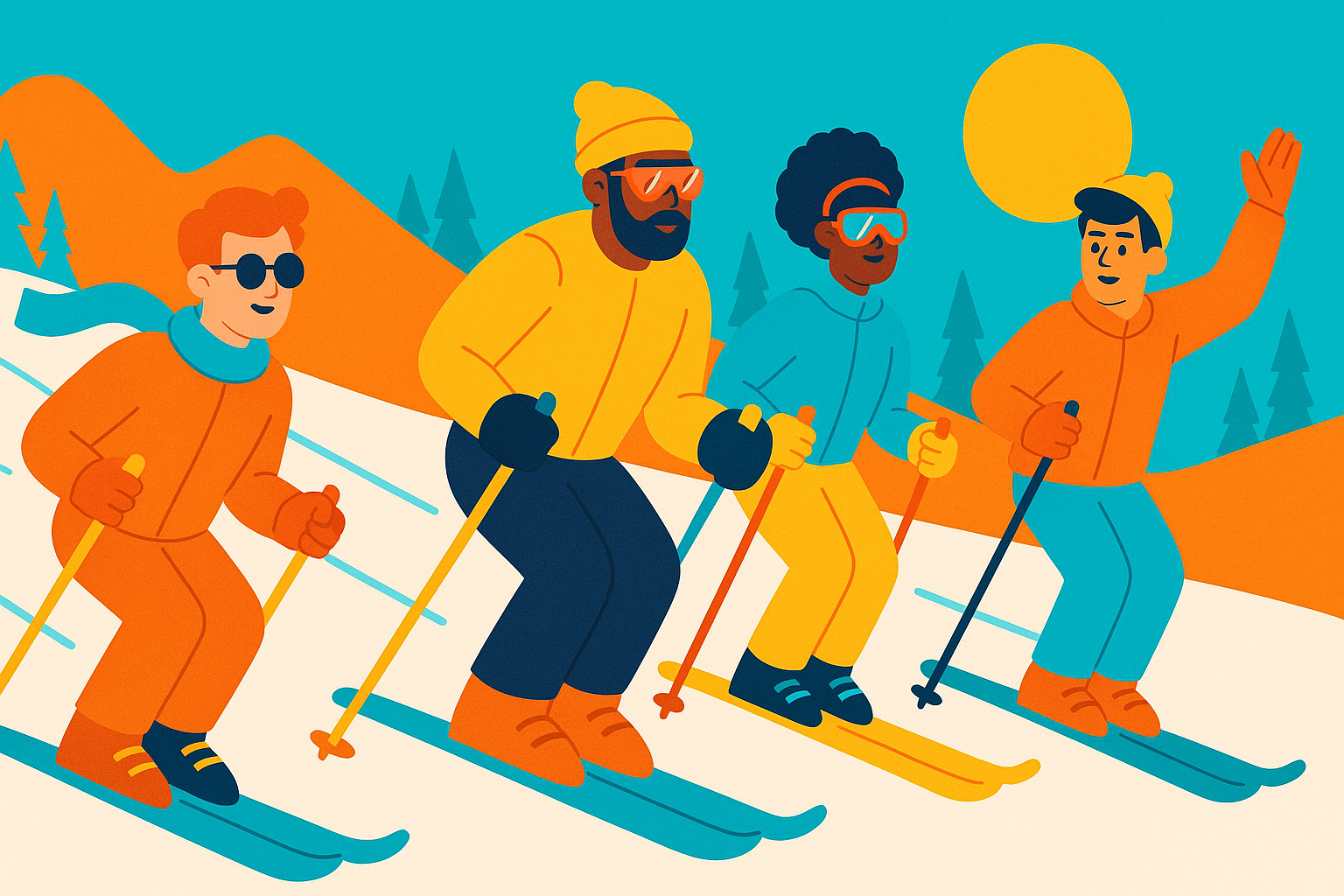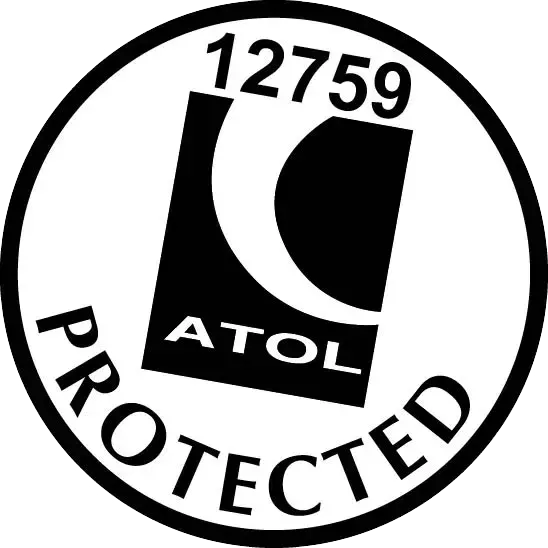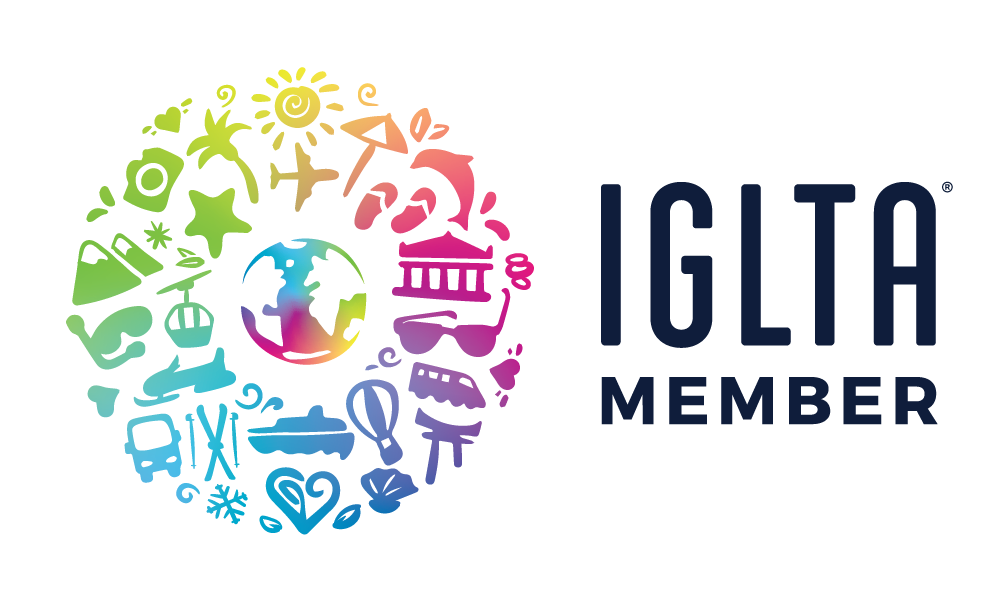LGBT+ History in Berlin: Exploring the City’s Queer Heritage
LGBT+ History in Berlin: Exploring the City’s Queer Heritage
Tracing the Gay History in Berlin — A City That Defined Queer Freedom
Berlin’s story is inseparable from the evolution of queer identity in Europe. From daring drag nights in the 1920s to underground activism in Cold War East Germany, the gay history in Berlin is layered, defiant, and unforgettable.
Few cities in the world have embraced self-expression so boldly — or faced such stark repression. Yet through every chapter, Berlin’s LGBT+ community rebuilt, redefined, and celebrated its right to exist.
Today, exploring Berlin’s queer heritage isn’t just about museums or memorials. It’s about standing in the same streets where history was made — where love defied laws and gender norms were challenged long before most cities even dared. Before we dive in, you might also enjoy reading Jamie’s insights in our guide to the best LGBT+ friendly winter resorts in Europe.
So, where does one begin uncovering this vibrant past?
The Birth of Queer Activism (Late 19th Century to 1920s)
The roots of gay history in Berlin reach back to the late 1800s, when the city became a centre for early LGBT+ advocacy. Long before Pride marches or rainbow flags, Berlin’s thinkers were reshaping public conversation about sexuality and identity.
Magnus Hirschfeld and the World’s First Gay Rights Organisation
In 1897, physician Magnus Hirschfeld founded the Scientific-Humanitarian Committee, the world’s first organisation to campaign for homosexual and transgender rights. His groundbreaking research challenged the criminalisation of same-sex relationships under Germany’s Paragraph 175.
Hirschfeld’s institute, established in 1919, became a haven for education and support — hosting Europe’s first archives of sexual science and pioneering early gender-affirming treatments. Visitors can still learn about his legacy at Magnus-Hirschfeld-Ufer, the street renamed in his honour along the River Spree.
Weimar Berlin: The Queer Capital of the 1920s
The 1920s turned Berlin into a beacon of queer visibility. Cafés and cabarets flourished across Schöneberg, Kreuzberg, and Mitte. Venues like Eldorado, famed for drag performances and cross-dressing culture, drew crowds from around the world.
Publications such as Die Freundin (The Girlfriend) — one of the first lesbian magazines — showcased stories of love, community, and equality.
Berlin wasn’t just progressive; it was revolutionary. Here, people explored identity openly and joyfully. Police tolerated same-sex venues, intellectuals debated gender politics, and a visible queer nightlife emerged years before similar movements elsewhere.
For visitors today, the Schöneberg neighbourhood remains the symbolic heart of queer Berlin. It’s where Hirschfeld lived, where Eldorado once stood, and where rainbow flags still line the cafés of Motzstraße. Exploring here connects you directly to over a century of LGBT+ resilience and pride.
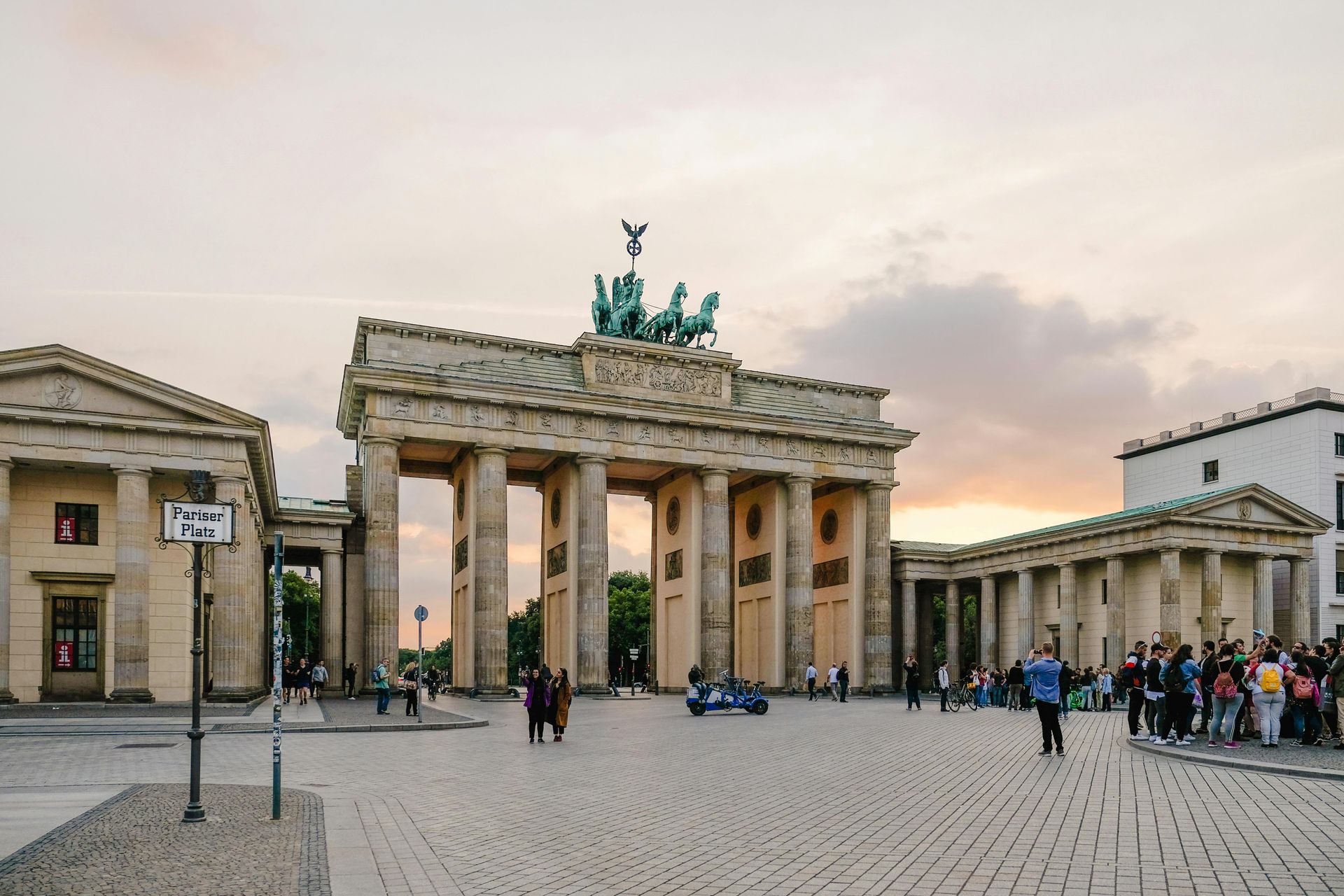
The Nazi Era — Destruction and Defiance
The next chapter in gay history in Berlin is one of devastating loss. When the Nazis seized power in 1933, the vibrant queer scene that had flourished during the Weimar years was violently erased.
Magnus Hirschfeld’s Institute for Sexual Science was looted and burned by Nazi youth, its invaluable research destroyed. Paragraph 175 — the law criminalising homosexuality — was not just upheld but made harsher, sending thousands of gay men to concentration camps marked by the pink triangle.
Those who survived spoke later of coded resistance: secret meetings, small acts of love in impossible times, and a determination to hold onto identity even when survival meant silence.
Berlin’s LGBT+ community was driven underground, but it never disappeared. That defiance became the seed of later activism.
Remembering Through Monuments and Memorials
Visitors today can honour this era’s victims at the Memorial to Homosexuals Persecuted Under Nazism, located opposite the Jewish Holocaust Memorial near the Brandenburg Gate. A small concrete cube with a window showing a film of same-sex couples kissing, it is quietly powerful — a reminder that history’s cruelty can never erase love.
A short walk away, the Topography of Terror Museum provides further context. Here, exhibitions explain how Nazi ideology persecuted those who didn’t conform — not only Jews, Roma, and political opponents, but queer people too.
Standing in these sites can be emotional. They force reflection, but they also show the resilience of Berlin’s queer spirit.
Divided Berlin — Queer Life on Both Sides of the Wall
When Berlin split after 1945, so did its queer communities. West Berlin became a cautious space for re-emergence, while East Berlin’s LGBT+ life unfolded in secrecy.
West Berlin: Slow Liberation
In West Berlin, Paragraph 175 remained in force until 1969, delaying open activism. Still, by the 1970s, underground bars began reopening in Schöneberg, and feminist and gay rights groups organised demonstrations.
The Lesbian Action Centre and Homosexual Action West Berlin became hubs for new dialogue — merging politics, art, and community. The annual Christopher Street Day (CSD) Parade, founded in 1979, marked a turning point. It drew hundreds at first, then tens of thousands, reclaiming public space once more for pride.
East Berlin: Hidden Networks and Quiet Courage
In the East, life was far riskier. Same-sex relationships were decriminalised earlier (1968), but social acceptance was minimal. Queer communities gathered quietly in private flats or sympathetic church spaces.
One such safe haven was the Gethsemane Church, where LGBT+ groups met under the cover of religious discussion. From these meetings, the first East Berlin Pride march was born in 1989 — just months before the Wall fell.
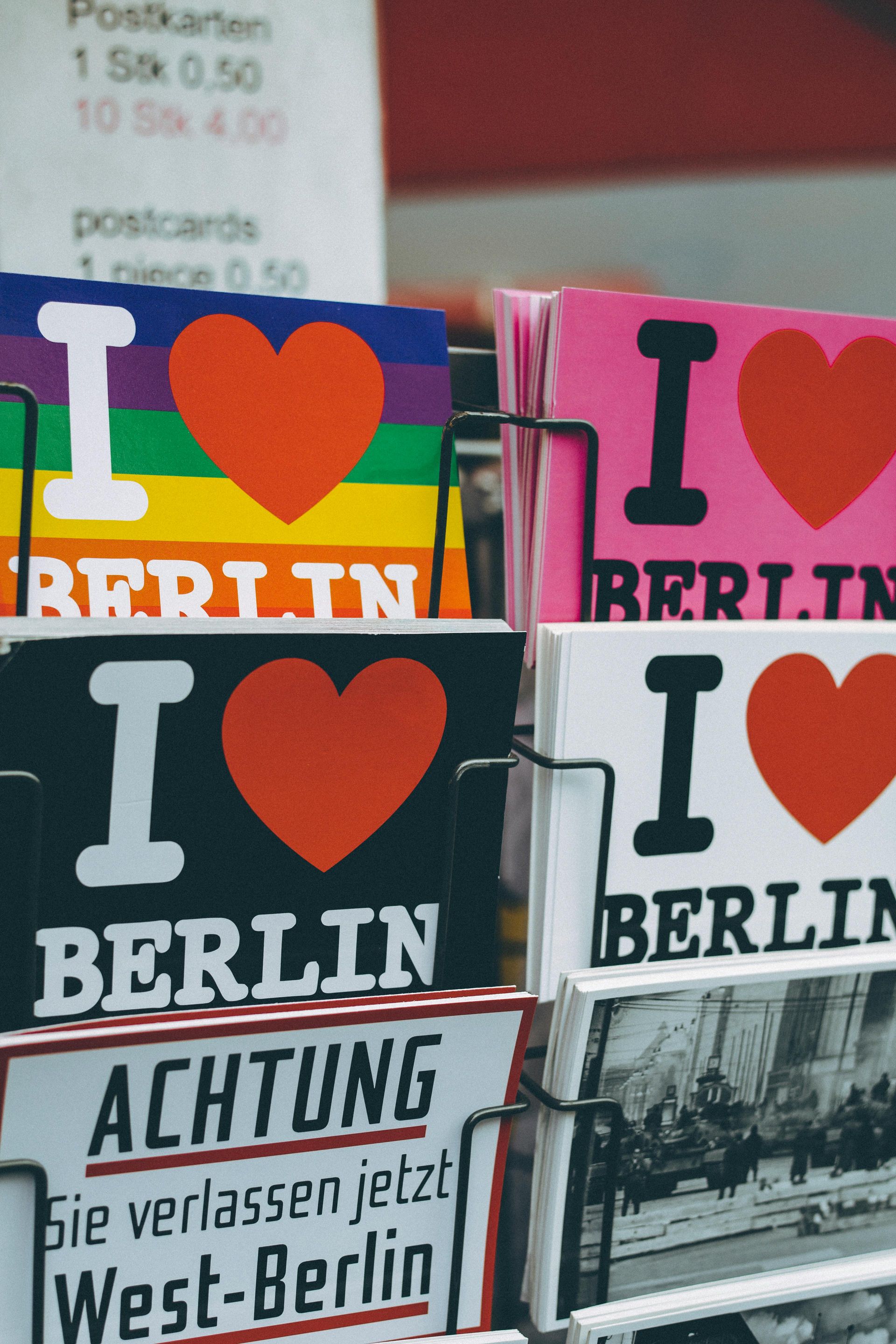
Reunification and the Rise of Modern Pride
With the Wall gone, a new era began. The 1990s brought openness, activism, and the revival of queer spaces across the reunited city.
The Birth of the Rainbow City
Berlin rapidly reclaimed its identity as one of the world’s most inclusive capitals. New clubs, art collectives, and queer bars emerged, especially in Kreuzberg and Friedrichshain. The first official Lesbian and Gay City Festival took place in Schöneberg in 1993, followed by Berlin’s massive CSD Parade, which today draws nearly one million visitors each July. For more information on community events, heritage sites, and queer-friendly venues across the capital, visit the official Visit Berlin LGBT+ guide.
Cultural institutions like the Schwules Museum (Gay Museum) opened in 1985 and expanded post-reunification. Its exhibits explore everything from pre-war activism to contemporary trans and intersex rights, offering one of the most comprehensive archives of queer life on earth.
A City That Celebrates Diversity Daily
Beyond festivals, queer history lives in daily Berlin life. From Café Berio, where activists still meet, to the Nollendorfplatz station, adorned with rainbow motifs, inclusivity feels woven into the cityscape.
Today’s travellers can join guided LGBT+ walking tours that trace the evolution from persecution to pride — revealing Berlin not only as a city of remembrance but of ongoing celebration.
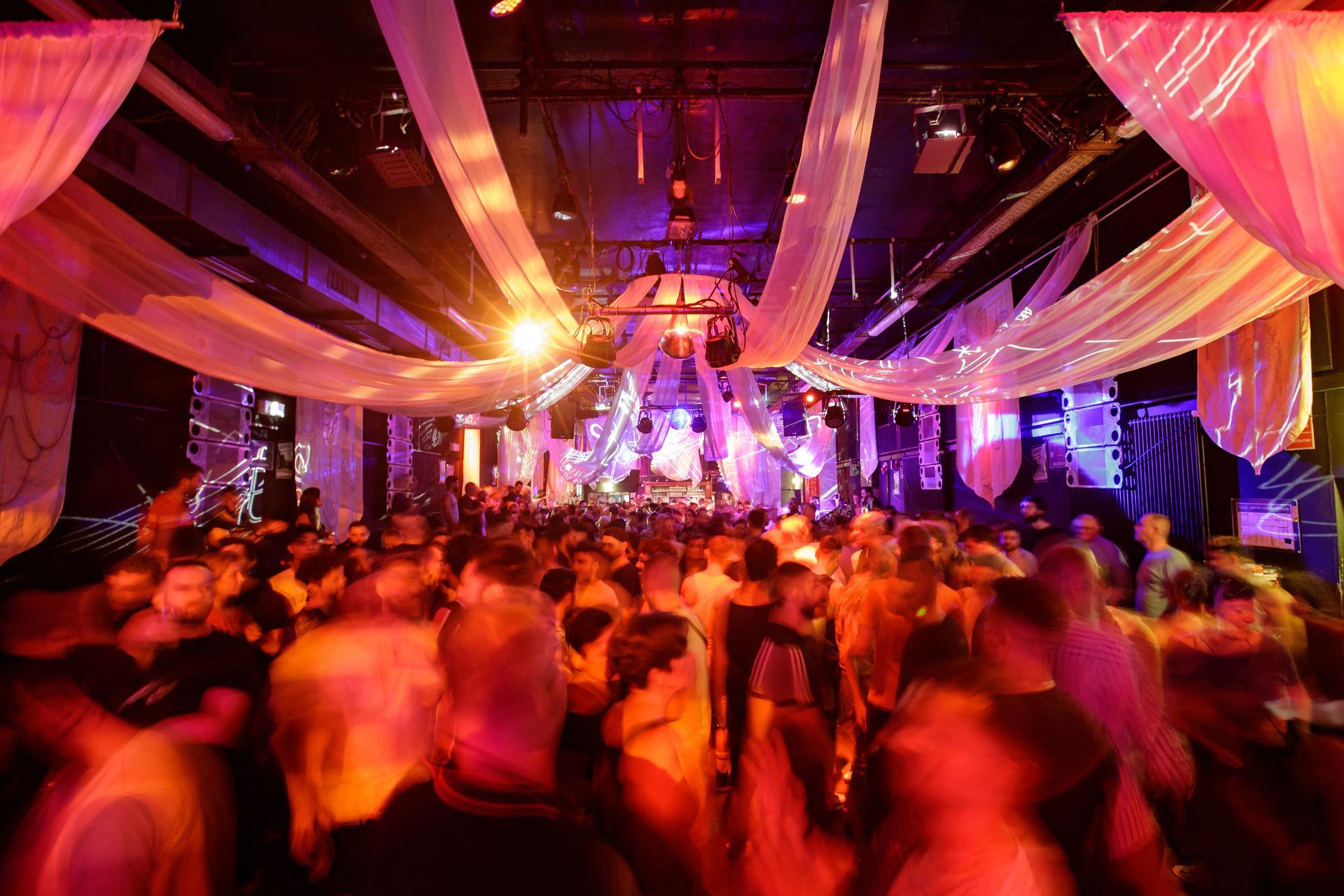
Exploring Queer Berlin Today
Berlin wears its queer legacy proudly. Every district holds traces of activism, creativity, and courage — making it one of the richest destinations in Europe for those keen to experience gay history in Berlin firsthand.
Kreuzberg — Counterculture and Creativity
Head east and you’ll find Kreuzberg, Berlin’s bohemian heart. In the 1980s, it became the epicentre of punk, politics, and queer art. Today, it’s a mix of galleries, vintage shops, and alternative bars where diversity thrives.
SO36, one of the city’s oldest clubs, hosts the legendary Gayhane night — a queer-Arab dance party that celebrates Berlin’s multicultural pride. For art lovers, Kunstraum Kreuzberg/Bethanien often features exhibitions exploring identity and inclusion.
Walking its graffiti-covered streets, you sense a spirit of rebellion that’s been there for decades — proof that queer expression here has always meant more than just nightlife; it’s a way of life.
Prenzlauer Berg — Quiet Reflection and Community
For those seeking a gentler pace, Prenzlauer Berg offers calm cafés and inclusive community spaces. Couples stroll hand-in-hand through Mauerpark, while queer-friendly brunch spots fill with locals on Sundays.
The nearby Schwules Museum, in Tiergarten, is easily reached by tram and makes a powerful stop. Its rotating exhibitions connect Berlin’s past and present, from early gender-identity studies to contemporary activism across Europe.
Exploring these areas isn’t about ticking boxes — it’s about feeling part of an ongoing story. Each street carries echoes of those who shaped Berlin’s queer identity, making today’s openness possible.
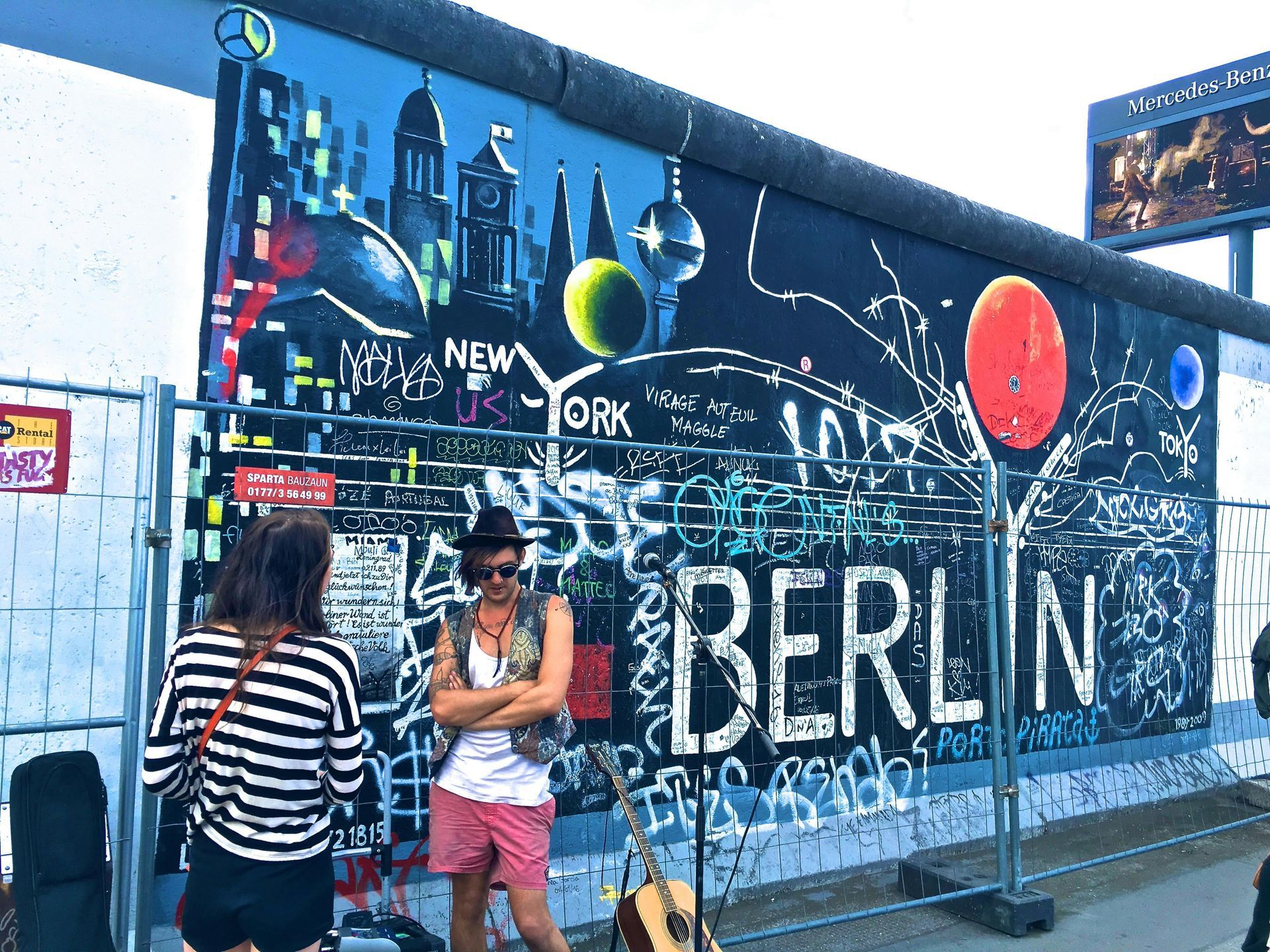
How Gay-Friendly is Berlin Today?
In short: incredibly.
Berlin is now recognised as one of the world’s safest and most inclusive cities for LGBT+ travellers. Its laws, culture, and daily life all reflect deep respect for queer rights — hard-won over more than a century.
Legal Protections and Rights
Germany legalised same-sex marriage in 2017, and Berlin remains a leader in equality. Anti-discrimination laws cover sexual orientation and gender identity comprehensively, and public institutions actively promote diversity.
Trans and non-binary rights are continually expanding, with visible support networks across the city. From police liaison officers trained in LGBT+ issues to inclusive health clinics, Berlin has built infrastructure around acceptance rather than tolerance.
Nightlife and Everyday Openness
The modern queer scene spans every taste — from leather bars in Schöneberg to all-gender techno raves at Berghain. Yet beyond the clubs, openness is part of everyday life. Same-sex couples hold hands on public transport. Pride flags fly from government buildings.
Visitors quickly notice how ordinary visibility feels. Locals will tell you it’s not about being “different”; it’s simply about being Berlin. To see how Berlin’s nightlife compares globally, explore our feature on how to navigate gay bars abroad with confidence,
LGBT+ Events and Pride
The city hosts over a dozen queer festivals annually. Alongside CSD Berlin, there’s the Transgenialer CSD, a grassroots alternative march in Kreuzberg, and the Lesbisch-Schwules Stadtfest — Europe’s largest street festival of its kind.
For travellers exploring gay history in Berlin, these events bring the timeline full circle — from hidden meetings to city-wide celebration. If Berlin’s Pride inspires you, check out our roundup of
Europe’s top LGBT+ festivals and destinations,
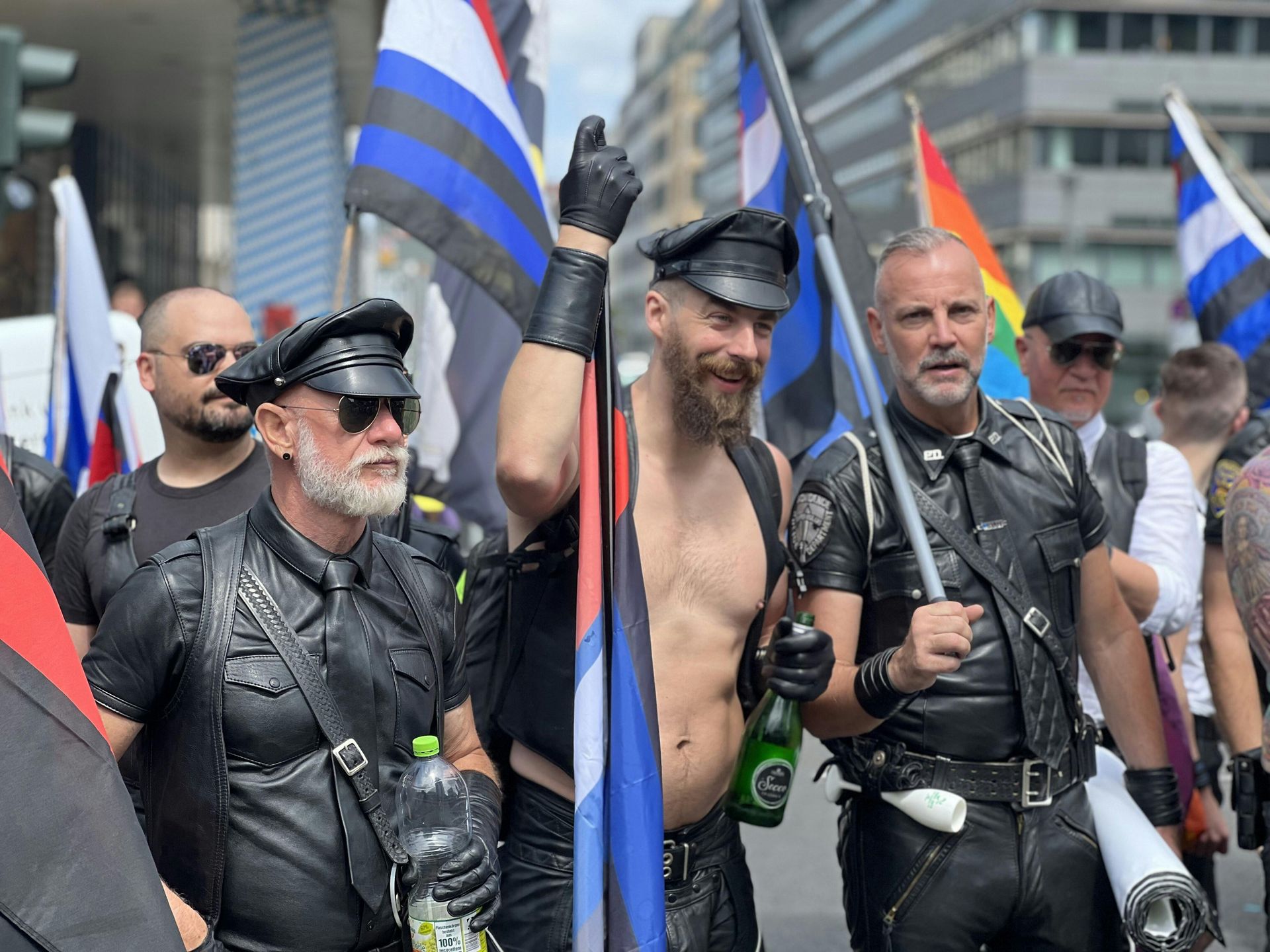
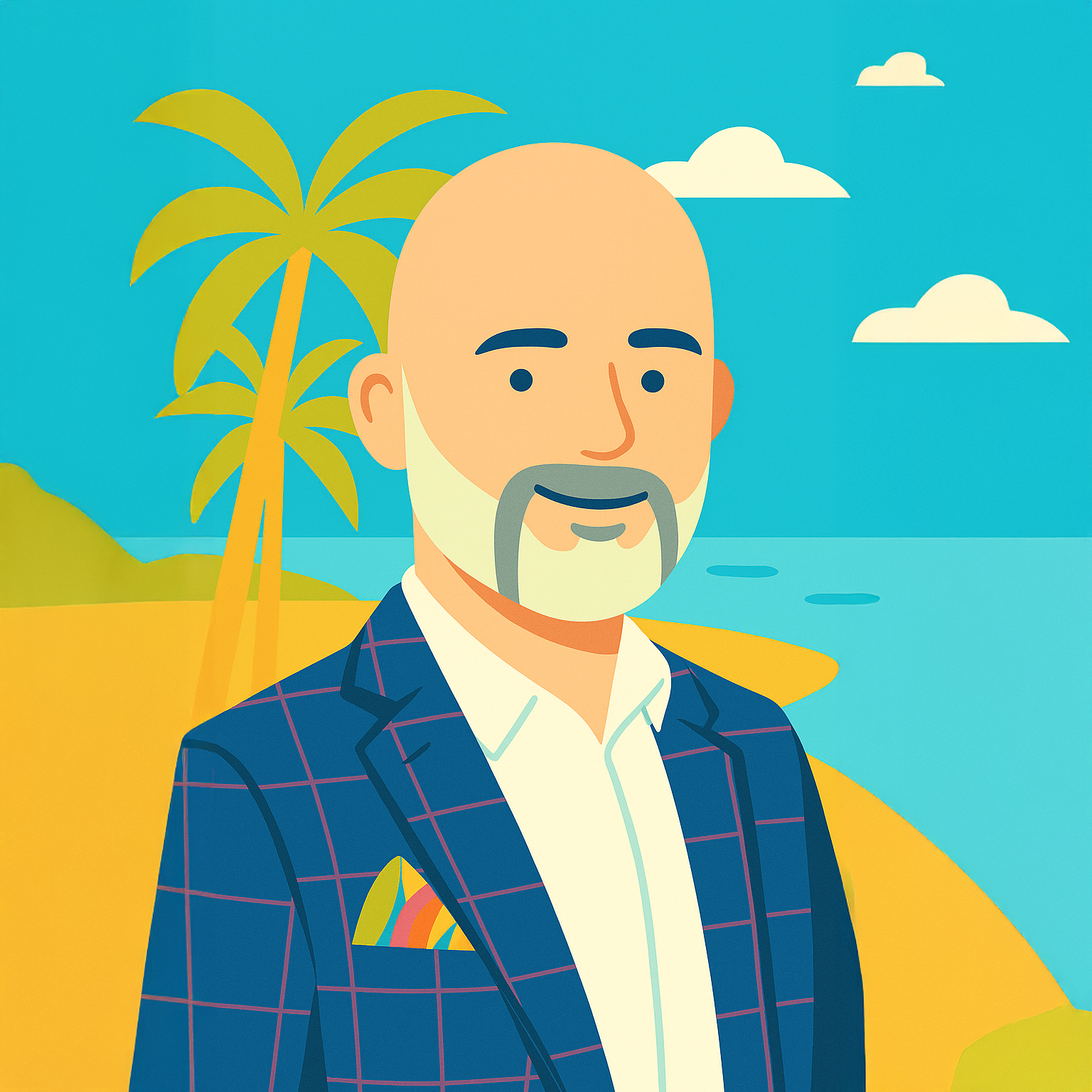
Jamie Says:
"Berlin reminds us why we started Wide Awake Holidays: to make sure every traveller feels seen, safe, and celebrated. History here teaches resilience; we handle the rest so you can enjoy the journey.”
Booking with Confidence — Protected Travel for LGBT+ Explorers
At Wide Awake Holidays, we know that travelling safely and authentically matters as much as the destination itself. When visiting Berlin, you’re stepping into a city where queer stories aren’t just remembered — they’re embraced. But we also understand that not every journey feels equally secure everywhere in the world.
Tailored Itineraries for LGBT+ Travellers
Our curated Berlin packages include guided history tours, museum passes, and introductions to inclusive local businesses. You’ll uncover the best of Berlin’s past and present with experts who share your values.
Whether you want to trace Magnus Hirschfeld’s legacy, experience CSD up close, or simply enjoy a romantic break in Schöneberg, our team designs trips that feel effortless and affirming.
Your Holiday, Protected
All Wide Awake Holidays bookings are ATOL-protected, giving you peace of mind from deposit to return flight. Our partners are vetted for inclusion policies, ensuring you’re welcomed everywhere you stay.
If travel disruptions occur, our support team is available 24/7 — because LGBT+ travellers deserve the same confidence and care as anyone else.
Plan Your Journey Through Berlin’s Queer Story
Berlin’s queer past isn’t just something to learn — it’s something to feel.
You’ll walk the same streets where courage began, celebrate freedom where it was once forbidden, and see how a city rebuilt itself on acceptance and love.
Whether you’re travelling solo, as a couple, or with friends, Berlin’s gay history offers meaning far beyond the museums and parades. It’s a reminder that progress is made by those who dare to be visible — and there’s no better place to honour that spirit than here.
At Wide Awake Holidays, we create LGBT+-affirming journeys that combine history, comfort, and authenticity. Our team knows Berlin inside out — from its iconic landmarks to its hidden community gems.
We’ll help you uncover every layer of its queer story while ensuring you feel safe, supported, and inspired every step of the way.
🌍 Ready to explore gay history in Berlin with experts who care?
Get in touch today — let’s plan your next unforgettable escape.
📞 Call: +44 (0)1495 400947
📧 Email: reservations@wideawakeholidays.co.uk
Your story deserves to be part of Berlin’s story — and we’d love to make that happen.
Send an Enquiry
We will get back to you as soon as possible.
Please try again later.
Frequently Asked Questions
What makes Berlin so important in gay history?
Berlin was one of the first cities in the world to openly explore sexual diversity. From Magnus Hirschfeld’s activism in the 1890s to the 1920s queer nightlife, the city shaped early LGBT+ rights movements that inspired global change.
Where can I learn about Berlin’s LGBT+ history in person?
Start with the Schwules Museum in Tiergarten, then visit Magnus-Hirschfeld-Ufer, the Memorial to Homosexuals Persecuted Under Nazism, and the Eldorado site in Schöneberg. Guided walking tours connect these landmarks into an immersive timeline.
Is Berlin a safe city for LGBT+ travellers today?
Yes — Berlin is one of Europe’s safest and most inclusive cities. Anti-discrimination laws, visible community networks, and open public attitudes make it exceptionally welcoming for queer visitors.
What events celebrate Berlin’s queer culture each year?
Major events include CSD Berlin (Christopher Street Day), the Lesbian and Gay City Festival, and Transgenialer CSD. The city also hosts queer film festivals, drag performances, and art exhibitions year-round.
How can I explore gay history in Berlin beyond the museums?
Join themed walking or cycling tours that visit key historic sites, attend talks at cultural centres, or spend time in neighbourhoods like Schöneberg and Kreuzberg, where the queer community’s story is still unfolding.
What are the best neighbourhoods for LGBT+ visitors to stay in?
Schöneberg is ideal for heritage and nightlife, Kreuzberg offers an alternative creative vibe, and Prenzlauer Berg provides relaxed cafés and local charm. All are safe and welcoming for queer travellers.
How did the Nazi era affect Berlin’s gay community?
During the 1930s, queer life was brutally suppressed. Gay men and trans people were arrested, Hirschfeld’s institute was destroyed, and Paragraph 175 was enforced with severity. Today’s memorials honour those persecuted.
What’s the story behind Berlin’s pink triangle symbol?
The pink triangle originated in Nazi concentration camps to identify gay prisoners. It has since been reclaimed as a global emblem of remembrance and pride — seen on memorials and Pride flags across Berlin.
Can I visit sites linked to the early gay rights movement?
Yes. Walk along the River Spree to Magnus-Hirschfeld-Ufer, see his former institute’s location, and stop by Nollendorfplatz for plaques commemorating activists and artists who shaped the city’s queer awakening.
How can I book an LGBT+-friendly holiday to Berlin?
Contact Wide Awake Holidays for bespoke packages designed for LGBT+ travellers. You’ll explore Berlin’s queer heritage safely and meaningfully, with ATOL protection and expert guidance every step of the way.
Some of our Latest Offers
Discover our latest hand-picked travel offers below – automatically updated and inspired by the destinations featured in this blog.
